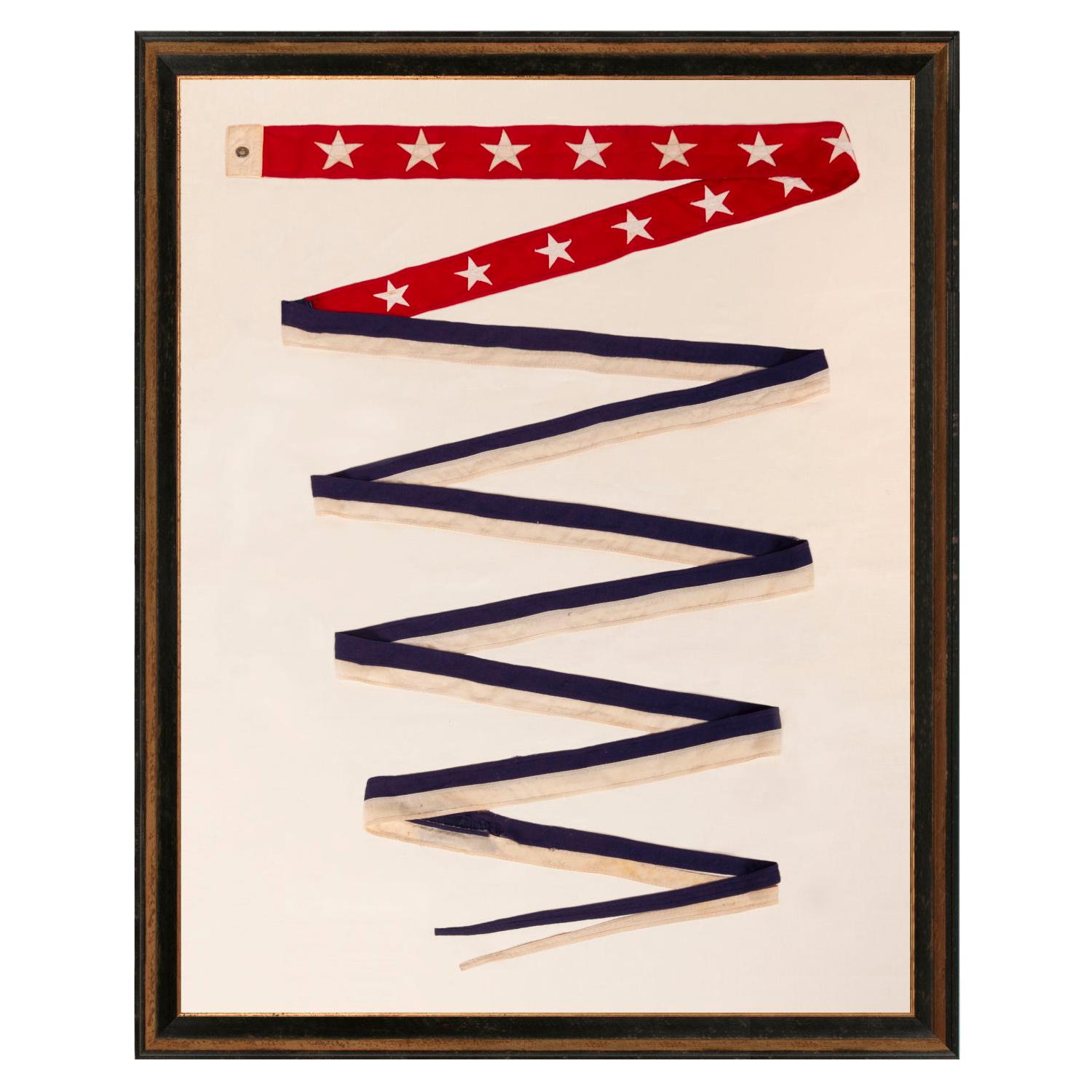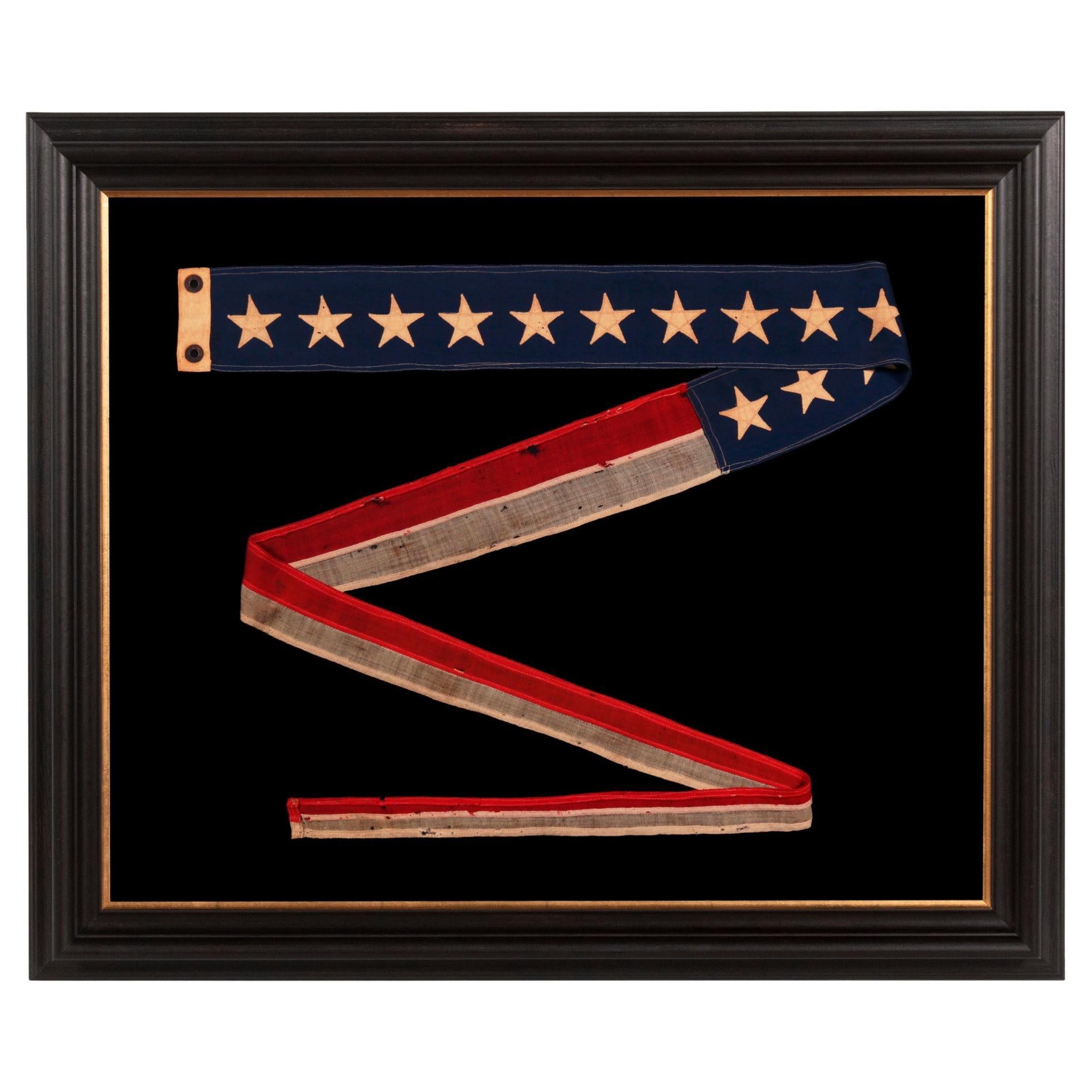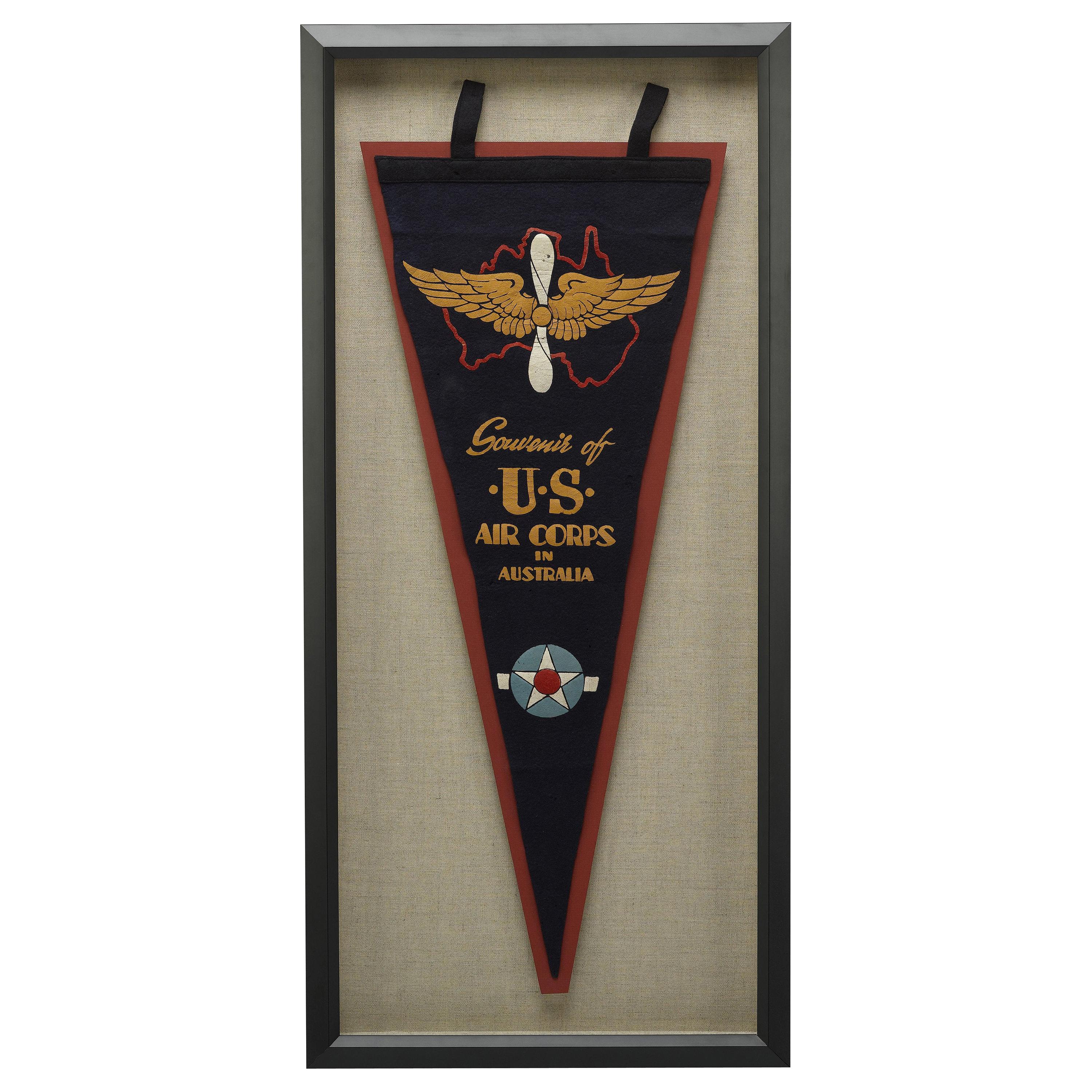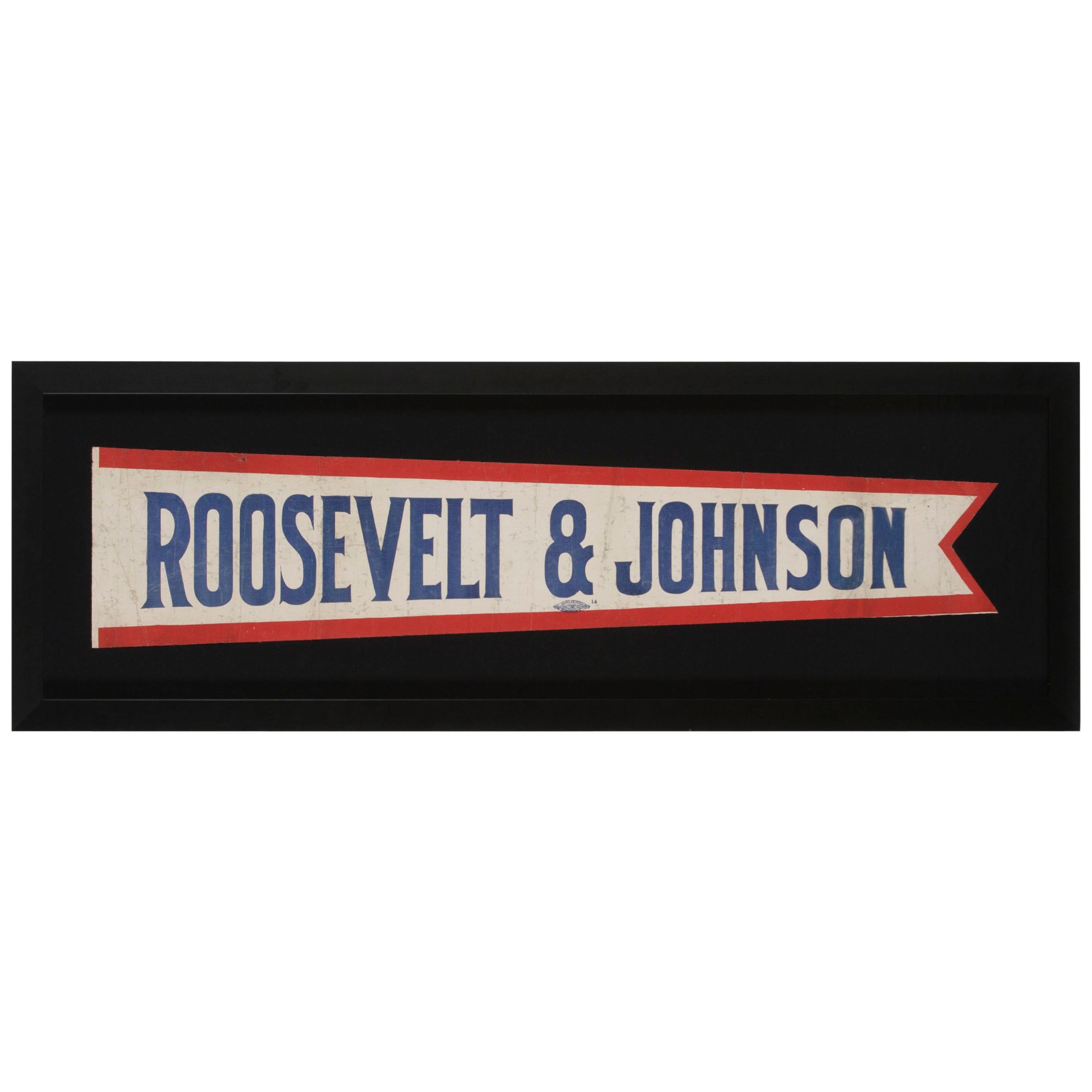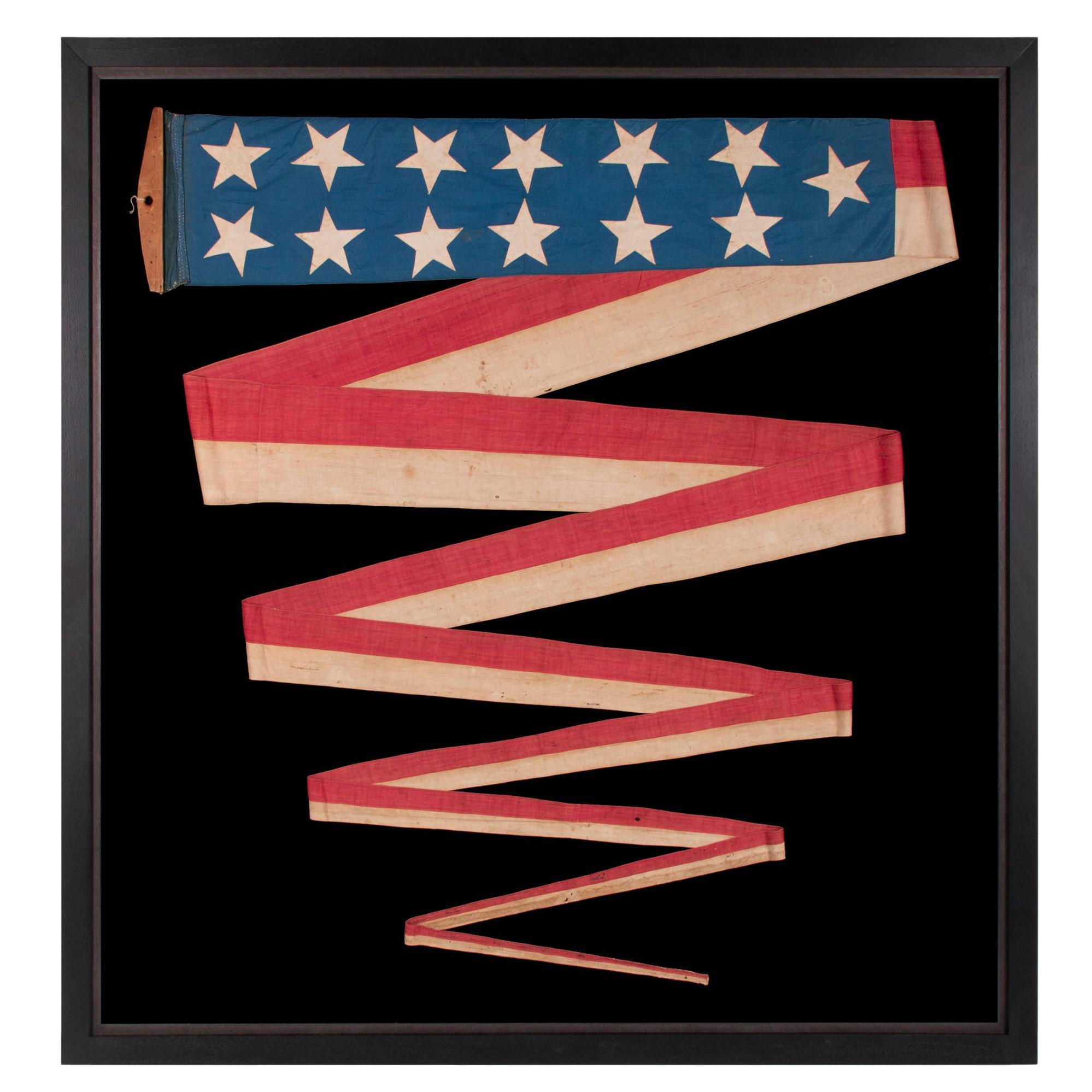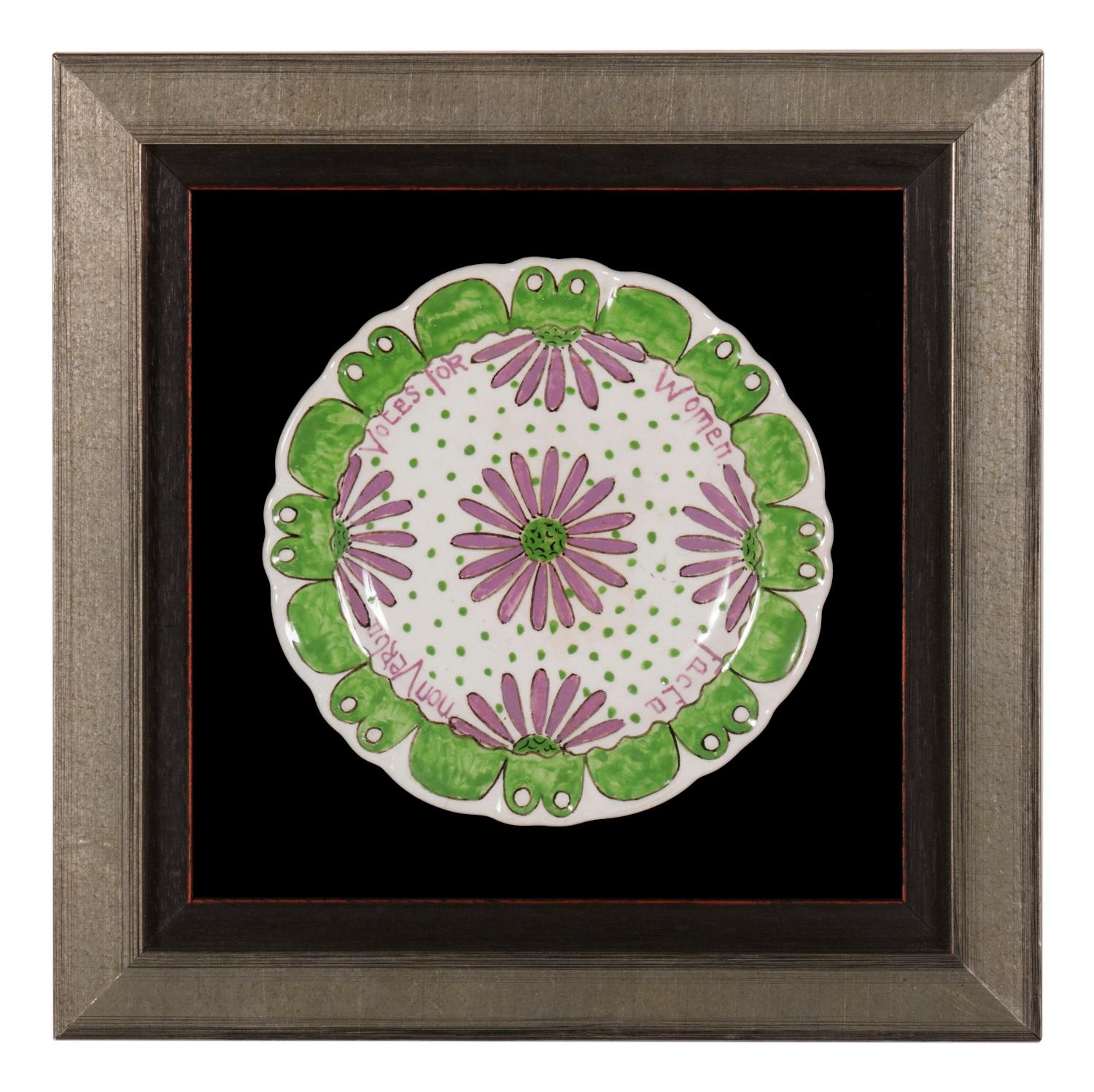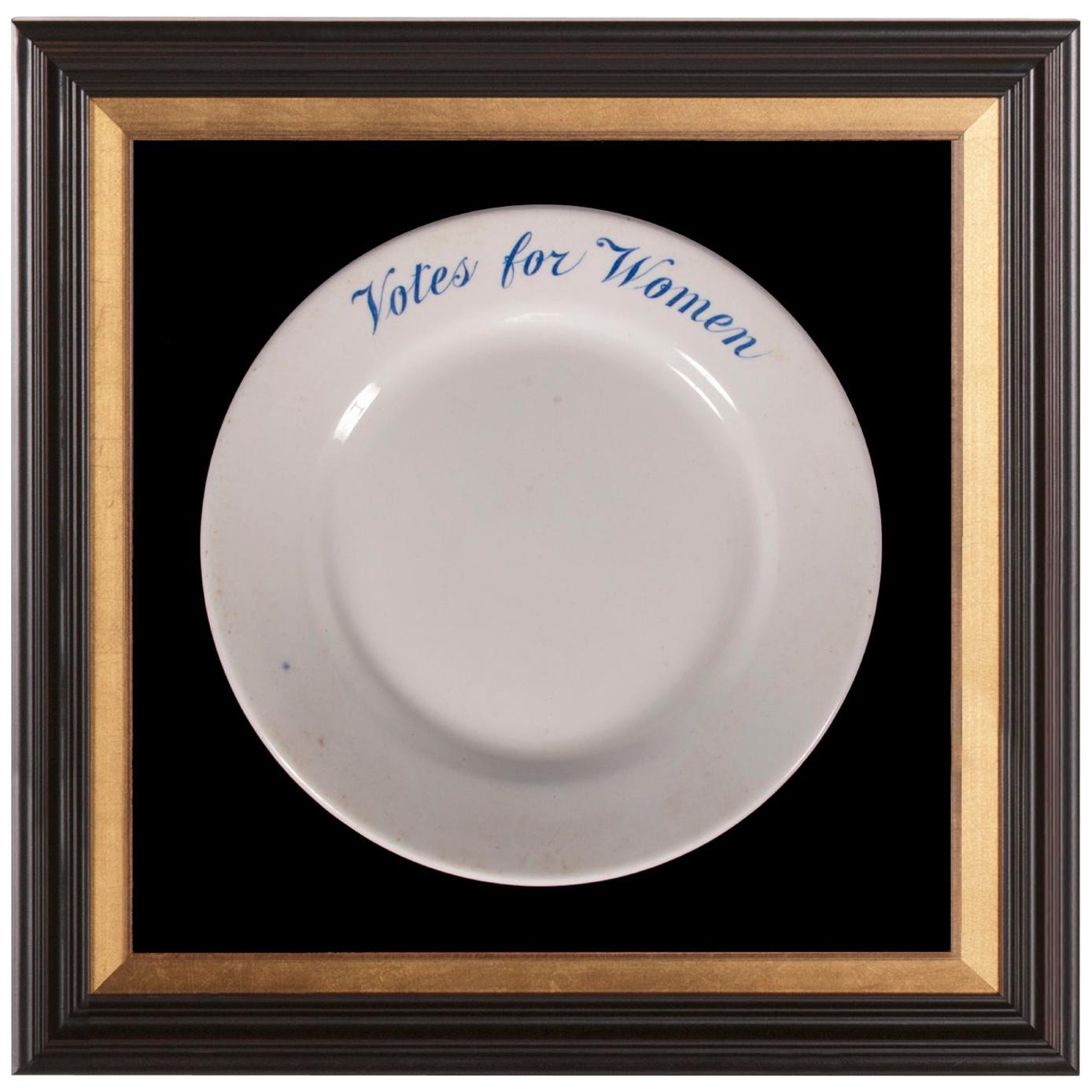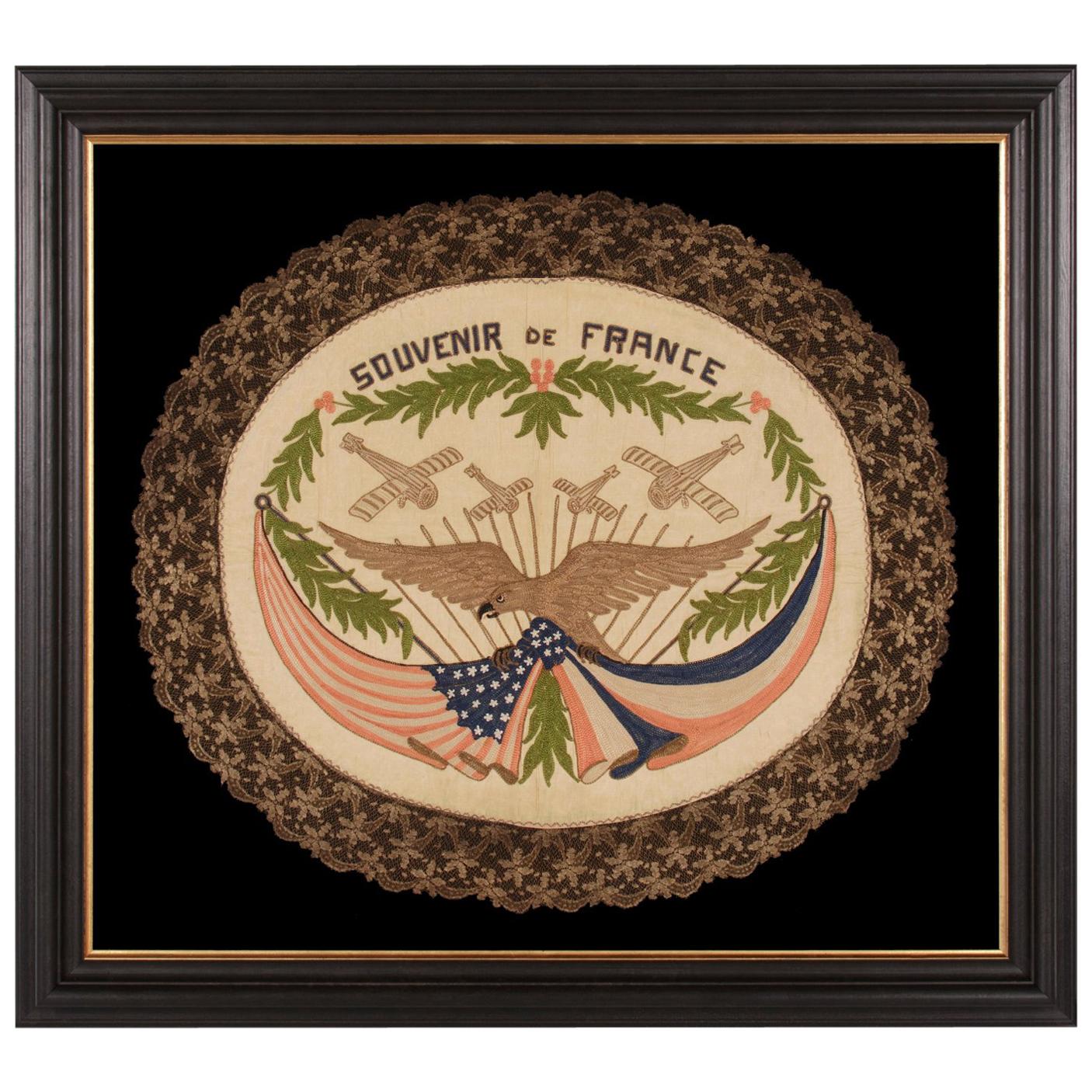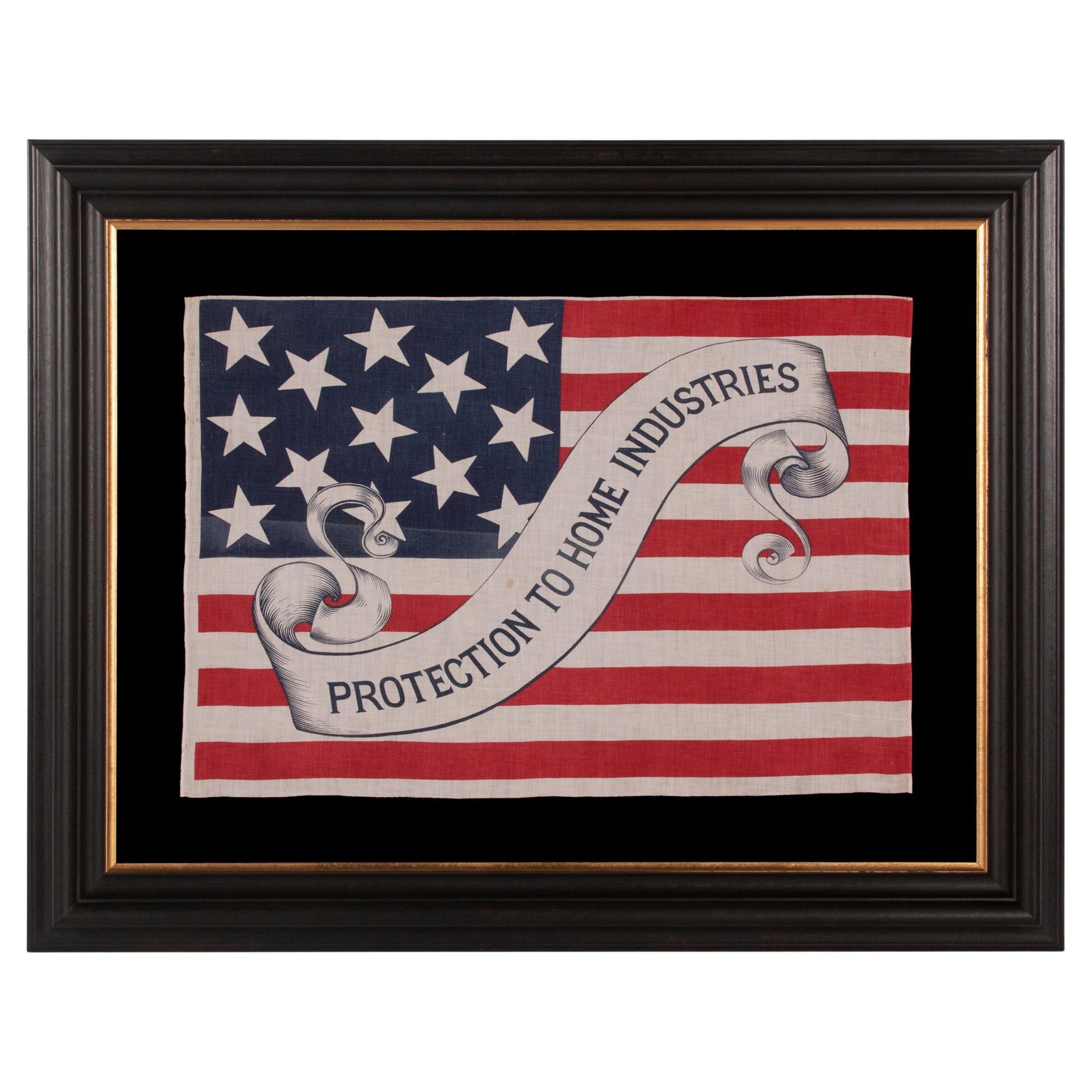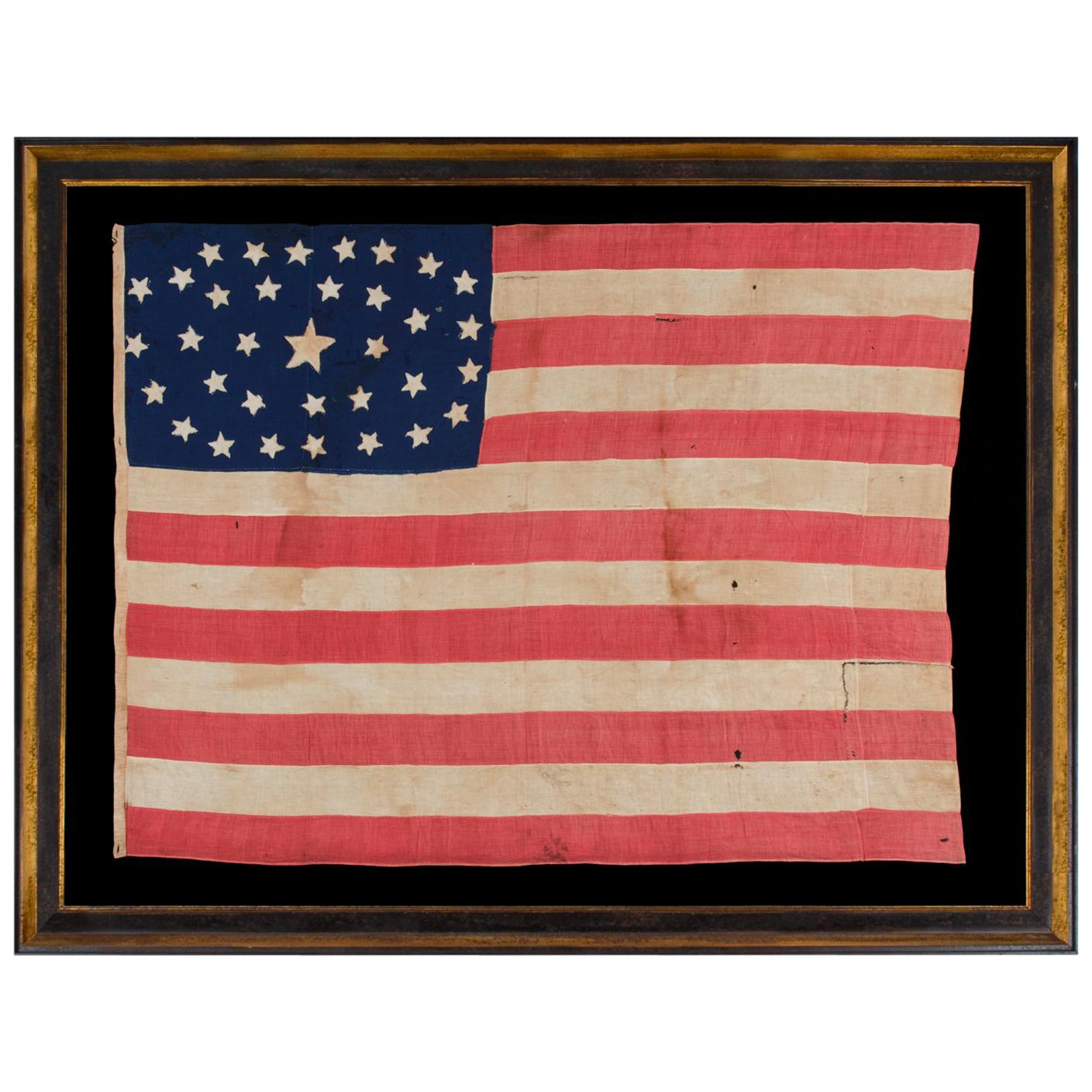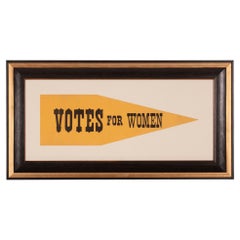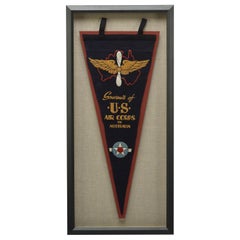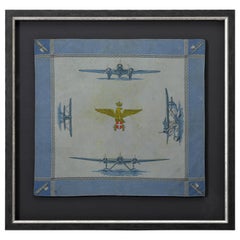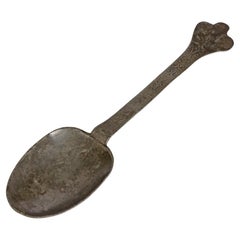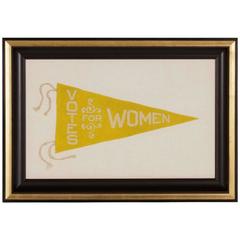
Triangular Felt Suffragette Pennant with an Interesting Design
View Similar Items
Want more images or videos?
Request additional images or videos from the seller
1 of 5
Triangular Felt Suffragette Pennant with an Interesting Design
About the Item
- Dimensions:Height: 18.5 in (46.99 cm)Width: 26.5 in (67.31 cm)Depth: 2 in (5.08 cm)
- Place of Origin:
- Period:
- Date of Manufacture:1910-1920
- Condition:See Item Description.
- Seller Location:York County, PA
- Reference Number:Seller: ws-0631stDibs: LU84977792433
About the Seller
5.0
Recognized Seller
These prestigious sellers are industry leaders and represent the highest echelon for item quality and design.
Established in 1991
1stDibs seller since 2008
61 sales on 1stDibs
Typical response time: 10 hours
More From This SellerView All
- U.S War Department Commissioning Pennant with 13 StarsLocated in York County, PAEXTREMELY RARE U.S. WAR DEPARTMENT COMMISSIONING PENNANT WITH 13 STARS, A REVERSAL OF THE U.S. NAVY COLOR SCHEME, TWENTY-FOUR FEET ON THE FLY, SP...Category
20th Century American Political and Patriotic Memorabilia
MaterialsWool
Price Upon Request - Paper Suffrage Pennant with Bold and Whimsical Western Style Lettering, ca 1915Located in York County, PAUnusual paper suffrage pennant, with bold and whimsical, western style lettering, circa 1915 American Suffragette pennant, in a very rare format, with text that reads “Votes for Women,” in a combination of two bold, Western-style fonts. Made of golden yellow paper, with the lettering printed in black, the profile is an unusual one. Linear for approximately 2/5 of its length, the remainder tapers to a point. An example in this style is documented in "The Keynoter: Journal of the American Political Items Conservators," Summer/Fall/Winter 2008 (Women's Suffrage Special Triple Issue), Volume 2008, Number 2-4, p.133. This periodical is the best printed reference that presently exists on Suffrage objects. Golden yellow was the customary color of the suffrage movement in America, a tradition that began with the first actual campaign to give women the right to vote. This took place in 1867 in Kansas, the first state to hold a referendum on the issue when suffragists Susan B. Anthony and Carrie Stanton focused their efforts there and wore sunflowers—the state flower—in a show of support, as well as yellow ribbons. The flower was an appropriate emblem for a rising sun and growth, which led to its use in other states, and the color carried over to many other objects employed in the campaign for years to come. In England, green, white, and purple / violet were introduced in 1908 and became the colors of the movement, which gave way to a nice acronym for “Give Women the Vote.” Various groups used these colors also, in the States, sometimes substituting golden yellow for green. Mounting: The textile was mounted and framed within our own conservation department, which is led by expert staff. We take great care in the mounting and presentation of flags and related textiles and have preserved thousands of examples. This is a pressure mount...Category
Vintage 1910s American Political and Patriotic Memorabilia
MaterialsPaper
- Commission Pennant with 13 Stars, like for Private Vessel, Ca 1892-1910Located in York County, PA8-Foot commission pennant with 13 stars, a unique example in my experience, likely produced for display on a private vessel, made circa 1892-1910. Commission pennants are the distinguishing mark of a commissioned U.S. Navy ship. Flown at the topmast, the typical American format is a long blue field, usually with a single row of white stars, although sometimes with their total divided into two rows, followed by two long stripes, red-over-white. A ship became commissioned when this pennant was hoisted. Flown during both times of peace and war, the only time the pennant is not flown is if a flag officer or civilian official was aboard and replaced it with their own flag. Sometimes the owners of private ships mimicked the use of Navy signals. Some seafaring men would have served in the Navy and become privy to various practices in that capacity. Others flew them purely for stylistic reasons, either on a regular basis or while the boat was dressed for special occasion. Hudson River steamers regularly flew pennants of this nature, as evidenced by period photography as well as the paintings of artists such as John and James Bard...Category
Antique Late 19th Century American Political and Patriotic Memorabilia
MaterialsWool
Price Upon Request - Violet & Yellow Suffragette Parade Banner, Ca 1910-1920Located in York County, PARare violet & yellow Suffragette parade banner, the plate example illustrated in the text reference on the subject, made ca 1910-1920. Hand-painted banners...Category
Early 20th Century Political and Patriotic Memorabilia
MaterialsSilk
Price Upon Request - Elongated Pennant Made for the 1912 Presidential Campaign of Roosevelt & JohnsonLocated in York County, PAELONGATED PENNANT MADE FOR THE 1912 PRESIDENTIAL CAMPAIGN OF THEODORE ROOSEVELT & HIRAM JOHNSON, WHEN THEY RAN ON THE INDEPENDENT, BULL MOOSE / PROGRESSIVE PARTY TICKET: Elongated,...Category
Vintage 1910s American Political and Patriotic Memorabilia
MaterialsCotton
- Hand-Sewn 13 Star Cornflower Blue 32 Foot Commission Pennant ca 1845-1865Located in York County, PAENTIRELY HAND-SEWN, 32-FOOT, SHIP’S COMMISSION PENNANT OF THE 1845-1865 ERA, A HOMEMADE, COTTON EXAMPLE, WITH 13 STARS ON A CORNFLOWER BLUE CANTON, IN A BEAUTIFUL STATE OF PRESERVATION Commission pennants are the distinguishing mark of a commissioned U.S. Navy ship. A ship becomes commissioned when the pennant is hoisted. Flown during both times of peace and war, the only time it is not flown is if a flag officer or civilian official is aboard and replaces it with their own flag. Flown at the topmast, this would be the first thing one would see coming over the horizon and identified the vessel as a warship. Sometimes the owners of private ships mimicked the use of Navy signals. Some seafaring men would have served in the Navy and become privy to various practices in that capacity. Others flew them purely for stylistic reasons, either on a regular basis or while the boat was dressed for special occasion. Hudson River steamers regularly flew pennants of this nature, as evidenced by period photography as well as the paintings of artists such as John and James Bard...Category
Antique Mid-19th Century American Political and Patriotic Memorabilia
MaterialsCotton
You May Also Like
- US Air Corps in Australia Vintage Military Pennant, circa WWIILocated in Colorado Springs, COPresented is a souvenir felt pennant celebrating the servicemen and women of the U.S. Air Corps who were based in Australia and fought alongside members of the Royal Australian Air Force during WWII. The navy pennant features a printed red outline of the Australian continent with the U.S. Air Corps “wings” superimposed on it. Below, the text reads, “Souvenir of U.S. Air Corps in Australia.” At the very bottom of the pennant is the U.S. Air Corps symbol. Framed according to archival standards, this pennant symbolizes the collaborative partnership between the United States and Australia during the height of the Second World War in the Pacific Theater. Following the swift Japanese conquest of the Philippines and East Indies in late 1941, the remaining servicemen of the United States Army Air Force in the Pacific eventually relocated to Australia, to join other US and Australian units, including the Fifth Air Force, and regroup. The Fifth Air Force was placed under the command of Major General George Kenney in July of 1942. Their new goal was to seize air superiority over New Guinea and gain back air coverage over the Solomon Sea. General Kenney worked with U.S. Army General MacArthur...Category
Vintage 1940s Australian Historical Memorabilia
MaterialsFelt
- Interwar Period Italian Blue Silk Handkerchief With Airplanes, circa 1930sLocated in Colorado Springs, COThis is a printed silk handkerchief from the interwar period, with an Italian aviation theme. This handkerchief features four early aircraft plane models, two of which are seaplanes. The inner field of the handkerchief is pale blue and contained by a black three-line waving border. The outer field is medium blue, with a darker blue at each corner. A white and black fasces rests in each corner. The center of the silk features a golden spread-wing eagle. Above the eagle’s head floats a gold crown. The eagle’s talons grip a shield printed with the Savoy arms, a white cross on a red field. Two gold fasces adorn either side of the shield. In most historical accounts of the early days of military aviation, our reverence for the activities of the American Expeditionary Force and its French and British companions-in-arms on the western front has led us to overlook the immense Italian contribution to the formation of airpower doctrine. The first aerial force projection occurred on Nov. 1, 1911, when Lt. Giulio Gravotta, flying a German-built monoplane, dropped one bomb on Zard and another on Taciura -- in Libya -- during the Italian-Turkish War. This event occurred just a little more than a year after the first flight of an Italian-designed and built aircraft. At about the same time, Gianni Caproni, a young Italian engineer with a passion for innovation and a vast admiration for the Wright brothers, built his first flying machine. By May 23, 1915, the day Italy entered World War I, Caproni had become Italy's leading aircraft designer and manufacturer. Caprooni designed and built a multi-engine bomber with range and bomb capacities to make it a potent offensive weapon. On Aug. 20, 1915, two of these Caproni three-engine bombers attacked the Aisovizza aerodrome with explosive and incendiary bombs, a preview of the most sustained, effective air offensive of the First World War. By early 1916, regular raids against Austro-Hungarian targets were being conducted by seven squadrons of Caproni bombers, with some 540 bombing missions flown by the year's end. Missions were on the increase, both in distance to targets and number of aircraft involved. In late 1917, due to the lack of suitable training facilities in the United States, a contingent of some 500 Americans were sent to Foggia, Italy, to learn military flying. After completing their training, the new pilots were commissioned in the Army Air Service, and the majority of them were sent to France to serve with the American Expeditionary Force. About 75 remained in Italy under the command of Capt. Fiorello LaGuardia...Category
Vintage 1930s Italian Political and Patriotic Memorabilia
MaterialsSilk
- William & Mary Rare Pewter Trefid Spoon with Portraits, Circa 1690Located in Bishop's Stortford, HertfordshireVery rare William and Mary pewter trefid spoon the handle molded in relief with portraits and dating from around 1690. The spoon has an elongated rounded ...Category
Antique 17th Century English William and Mary Political and Patriotic Me...
MaterialsPewter
- 39-Star Antique American Flag with 'Whimsical' Star Pattern, 1889Located in Colorado Springs, COThis is a 39-star unofficial American flag, handmade and printed on cotton. The flag dates to 1889 and has a unique history, thanks to its rare star-count. The flag’s canton is prin...Category
Antique 1880s American Political and Patriotic Memorabilia
MaterialsCotton
- 38-Star Antique American Flag with Unique Canton, circa 1876-1890Located in Colorado Springs, COThis is a striking 38-star American flag. The flag dates to 1876-1890, when Colorado (represented by the large star in the center of the flag’s canton) joined the Union as the 38th s...Category
Antique Late 19th Century American Political and Patriotic Memorabilia
MaterialsMuslin
- Antique Federal Eagle American 50 Star Flag with Brass Eagle Pole, 19th CenturyLocated in Oklahoma City, OKMonumental 50 star American Flag with antique Federal Eagle brass and wood pole. A patriotic piece suitable for any home. This set includes both ...Category
Antique 19th Century American Federal Political and Patriotic Memorabilia
MaterialsBrass, Bronze
$4,800 Sale Price20% Off
